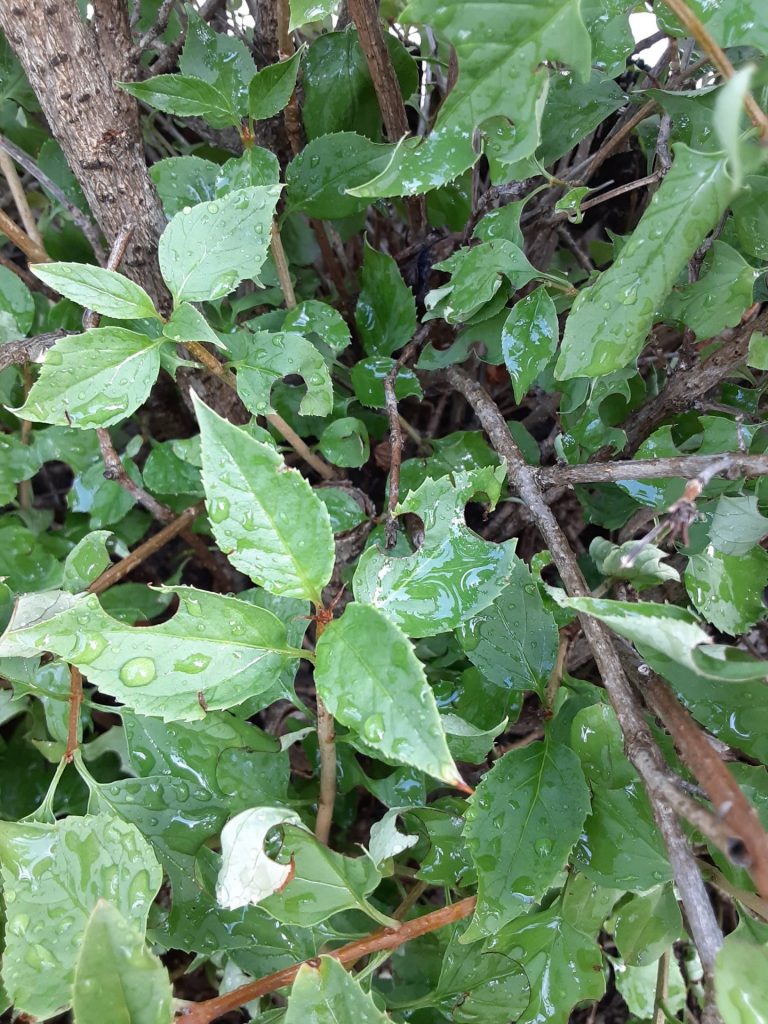
I take care of this forsythia which is on a rooftop patio on the top of a low-rise building here in the city; it’s a super-sunny location. I was wondering if you could tell anything from the shapes of the holes in the forsythia leaves here. The holes have been appearing for years. Is there anything I could do about this problem?
The leaves look like they were neatly hole-punched! This is likely the work of leafcutter bees, important pollinators that are also tiny architects. They don’t eat the leaves, but use the circular leaf pieces to build their nests. These nests can be found in wood, hollow stems, the ground, holes in concrete or pretty much any cavity the bees can find. See Colorado State University Extension’s Leafcutter bees. These bees are solitary (they don’t travel in swarms) and are not aggressive. Their preferred leaves are rose, green ash, lilac and Virginia creeper, but they are known to cut the leaves of many types of plants, and even cut circular chunks out of flower petals too. And don’t worry, these holes should not harm the plant- as you indicate, the forsythia remains healthy despite yearly attacks.
When I first started researching your question, I thought perhaps that two-banded Japanese weevils were the culprits. The adults chew the leaf edges, making semicircular holes like the ones in your photo. But these insects are actually munching the leaves, and they don’t leave the near-perfect “holes” that the leafcutter bees would do. So I don’t think it’s the weevils. But just in case it is here’s some information about them.
As with the leafcutter bees, damage from the weevils is usually only cosmetic. However, as the larvae feed on the plant roots, which could at some point do lasting damage, it is a good idea to minimize any infestations. Here’s a photo of the critter taking a break from munching, from Iowa State University Extension’s Twobanded Japanese Weevil – Another Invasive Pest .
A simple test can help confirm if weevils are the culprits. The adult weevils feed during the day. Try shaking the forsythia branches over a white cloth – see if any of the beasties fall off. They may “play dead” (not kidding!) so be sure to drop them in a container of soapy water to kill them.
The best way to control the weevils is to keep the area around the plant free of debris, as the larvae overwinter in leaf litter. Clean up dead leaves and fallen branches, and replace old mulch. Prune the plant after it flowers and remove old stems. This is a good idea to do anyway, to keep the plant healthy and discourage pests and diseases.
I hope that your forsythia tree continues to be a destination for the leafcutter bees. (In the less likely event that the culprit does turn out to be the weevils, I hope that you have seen the last of your forsythia-munchers.)
August 30 2021

